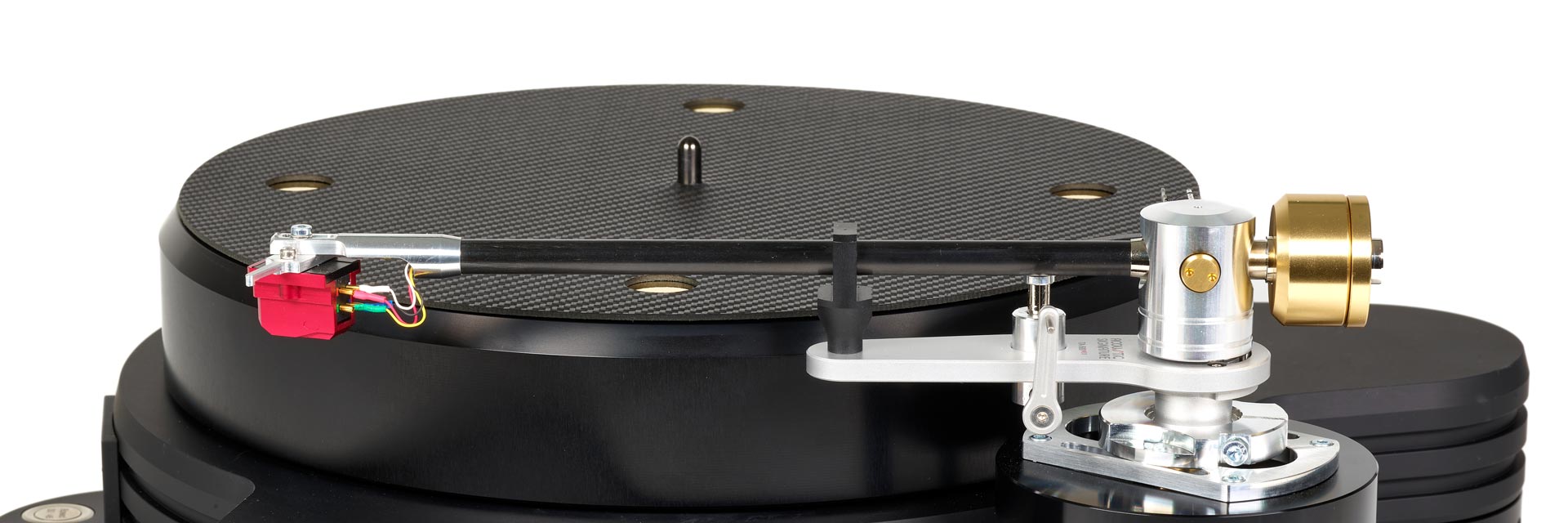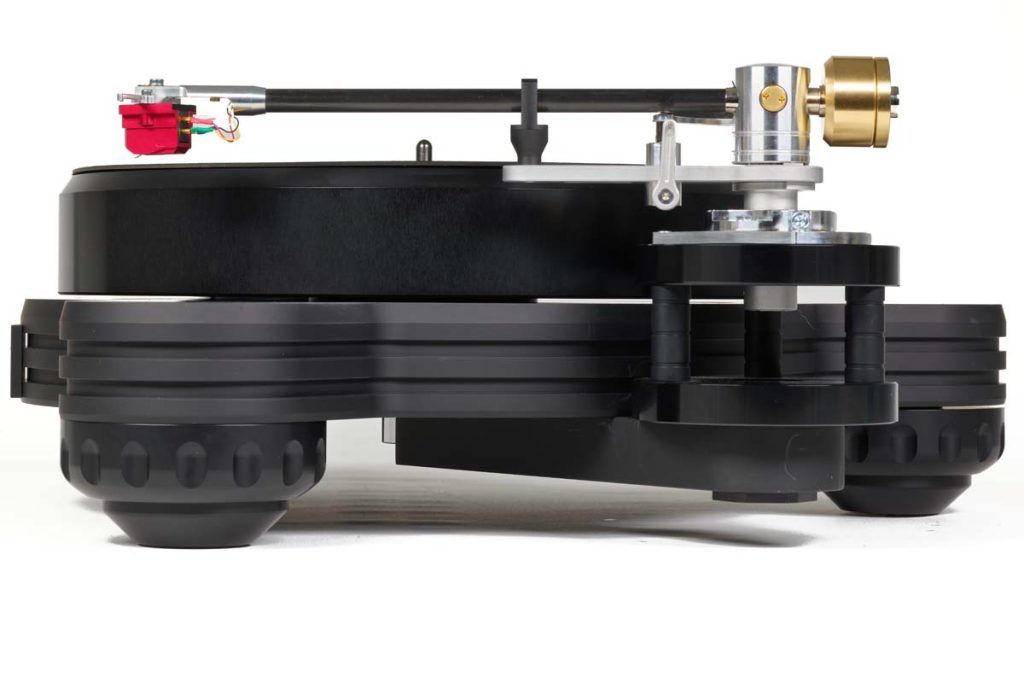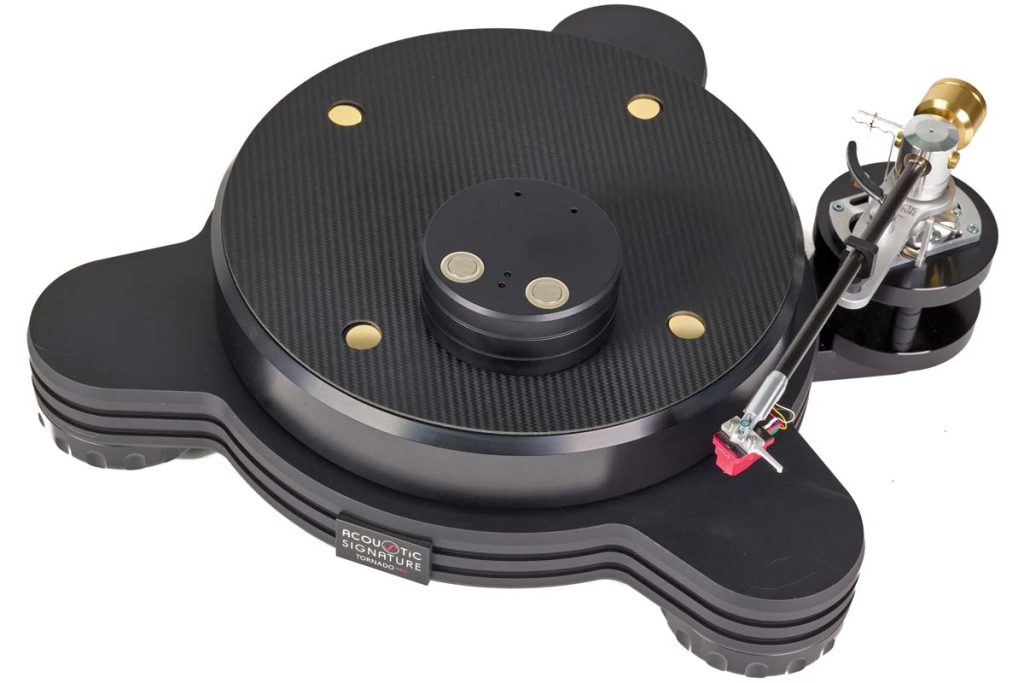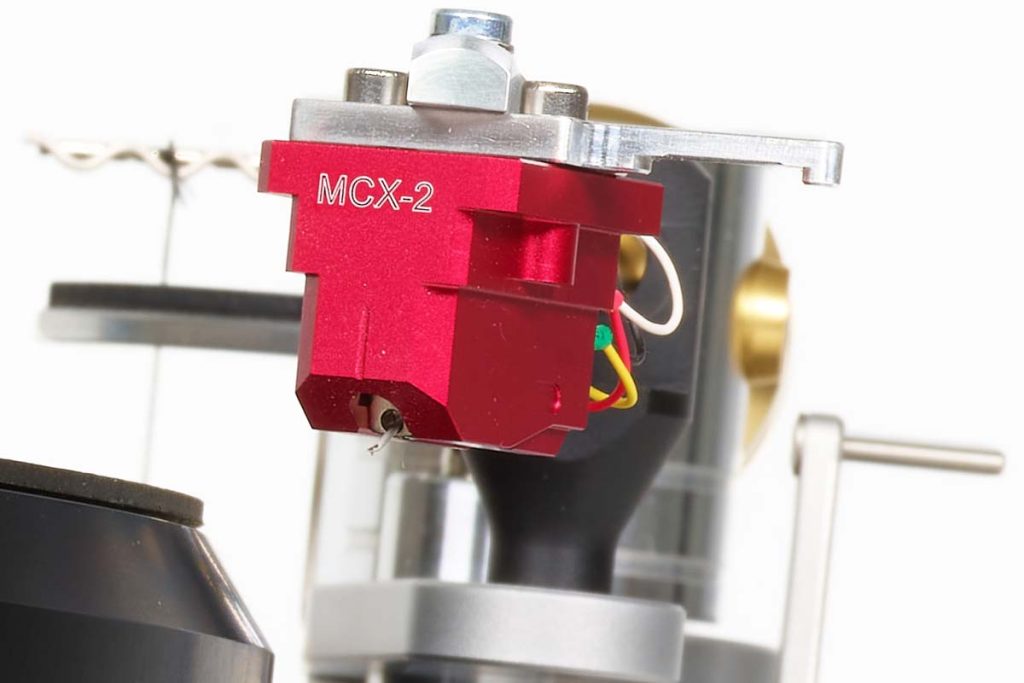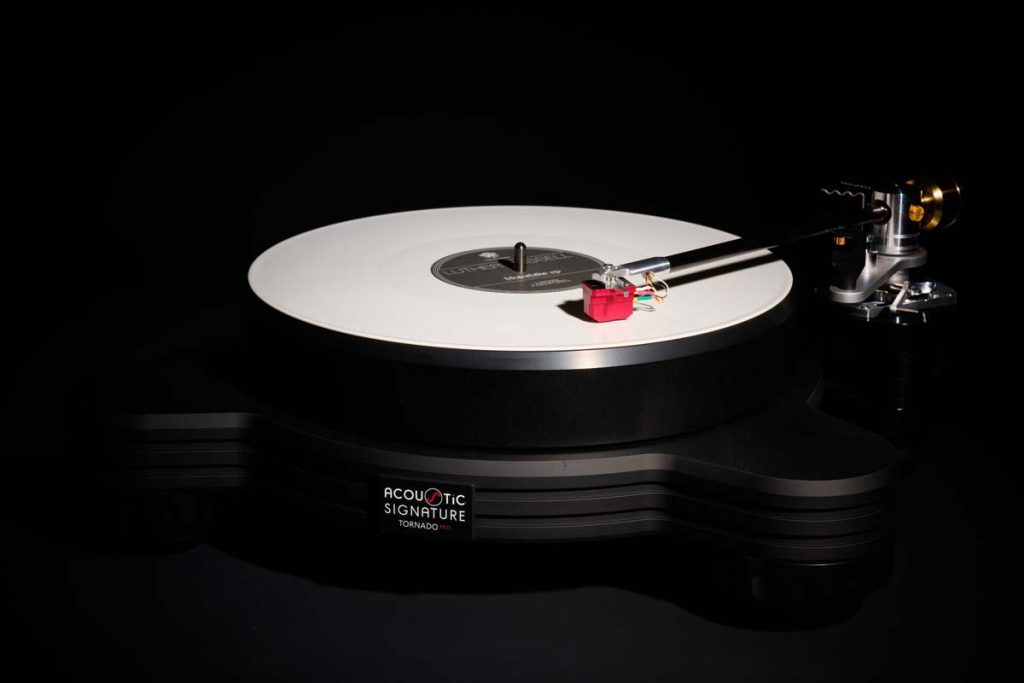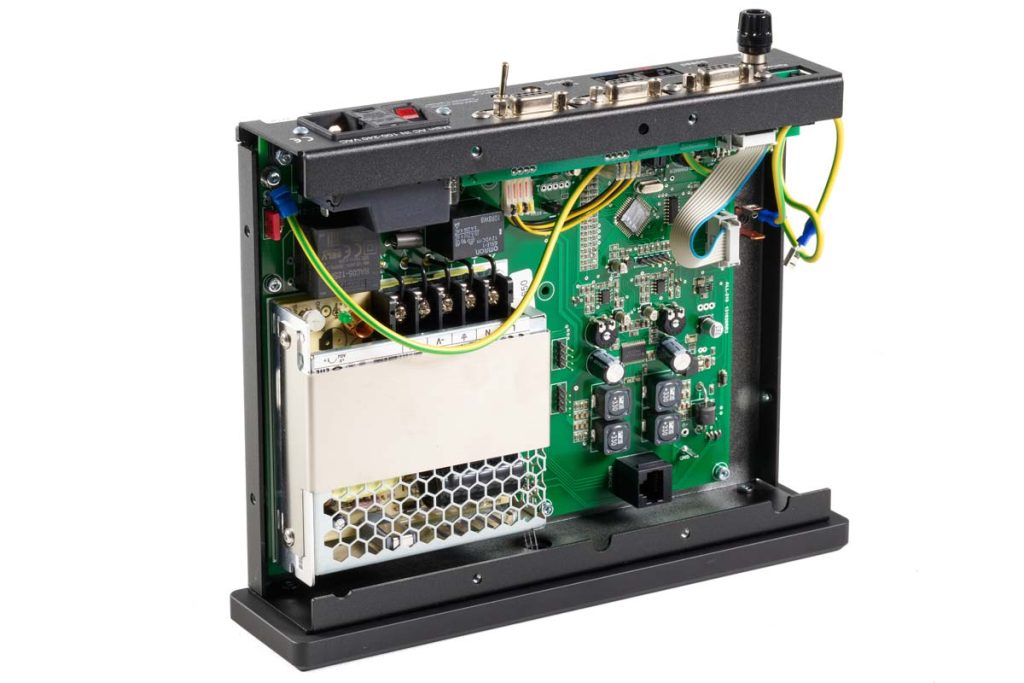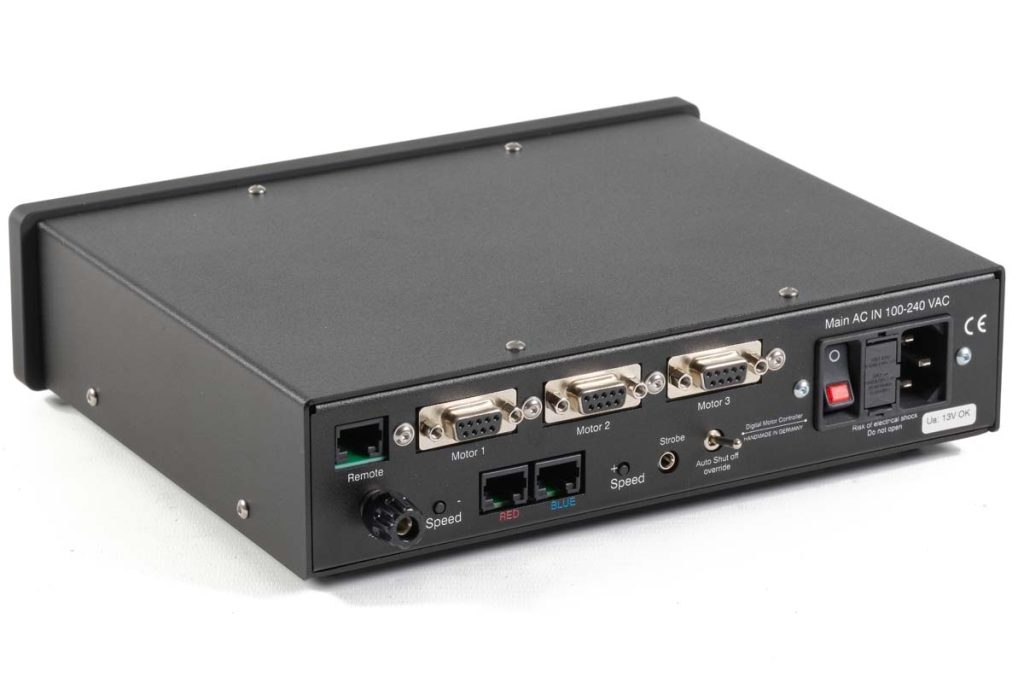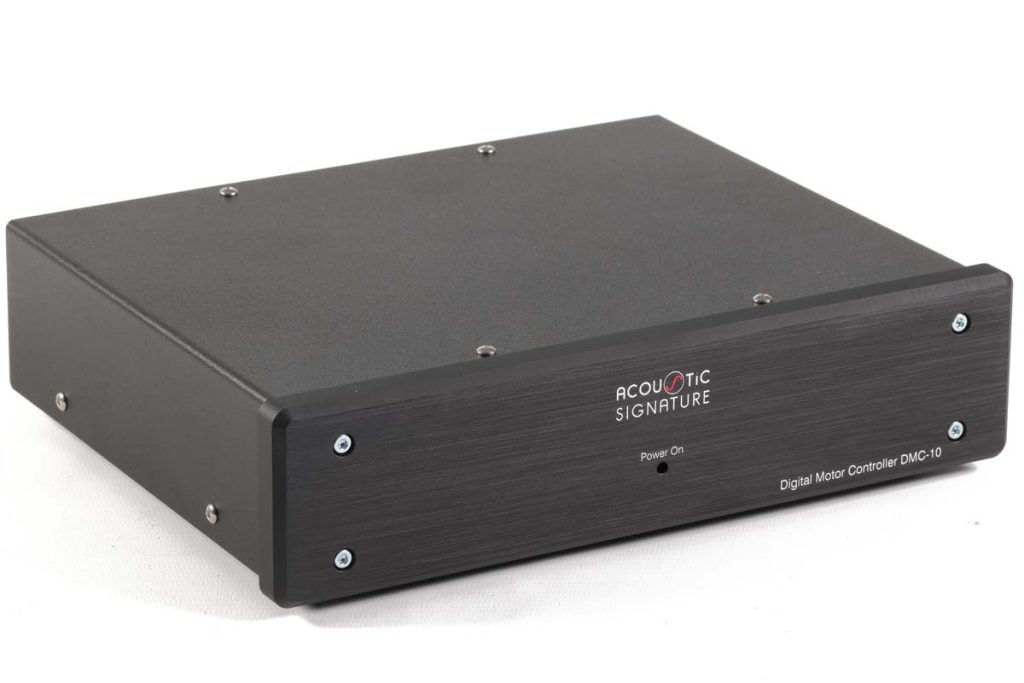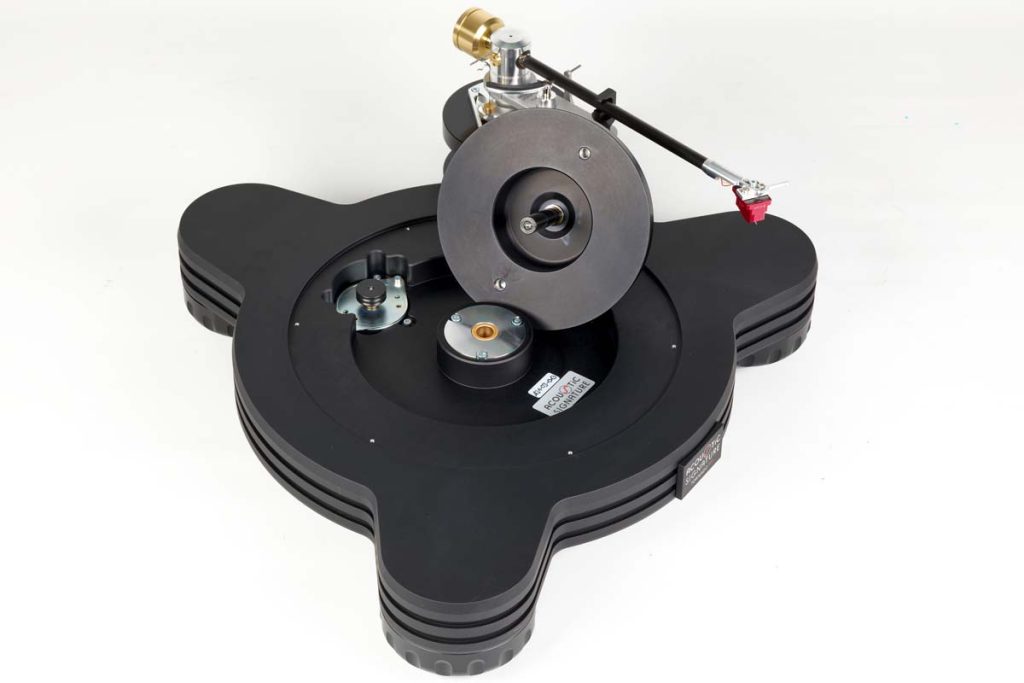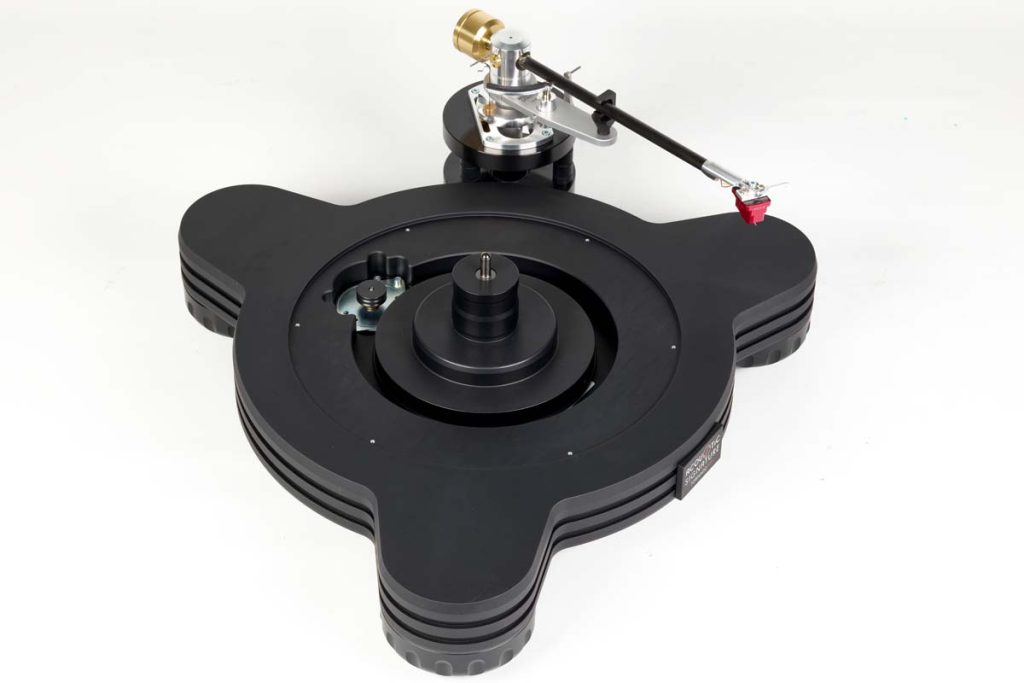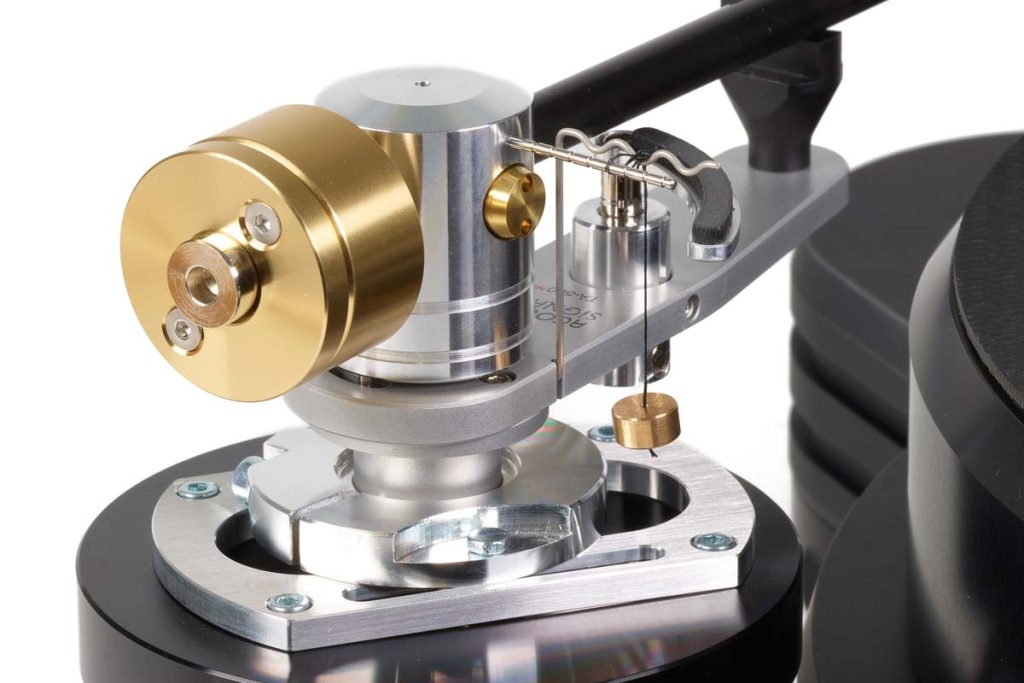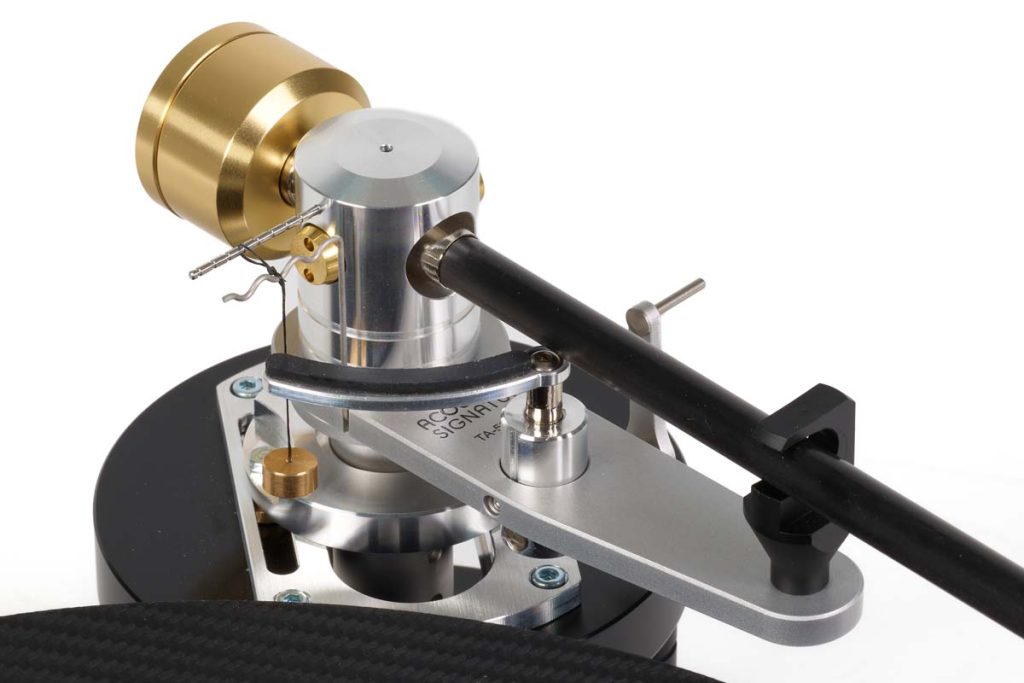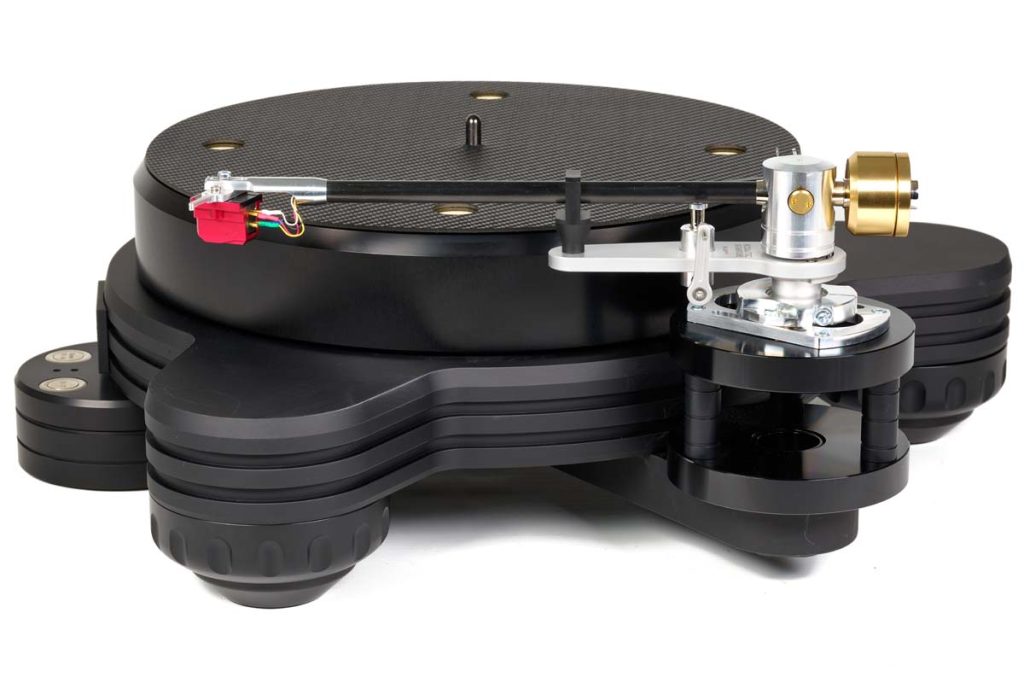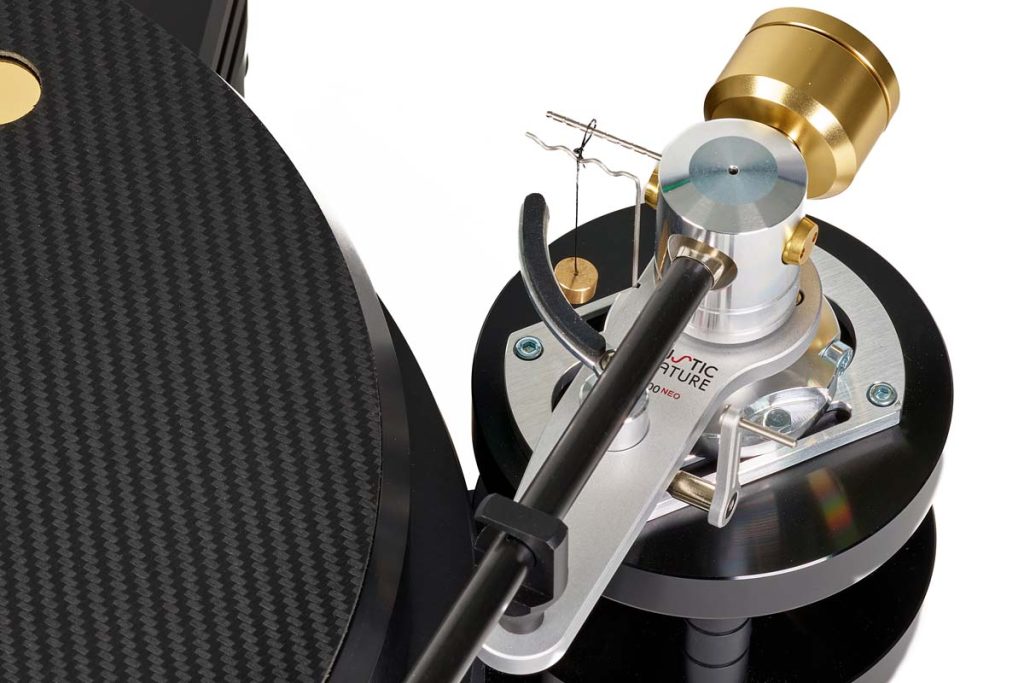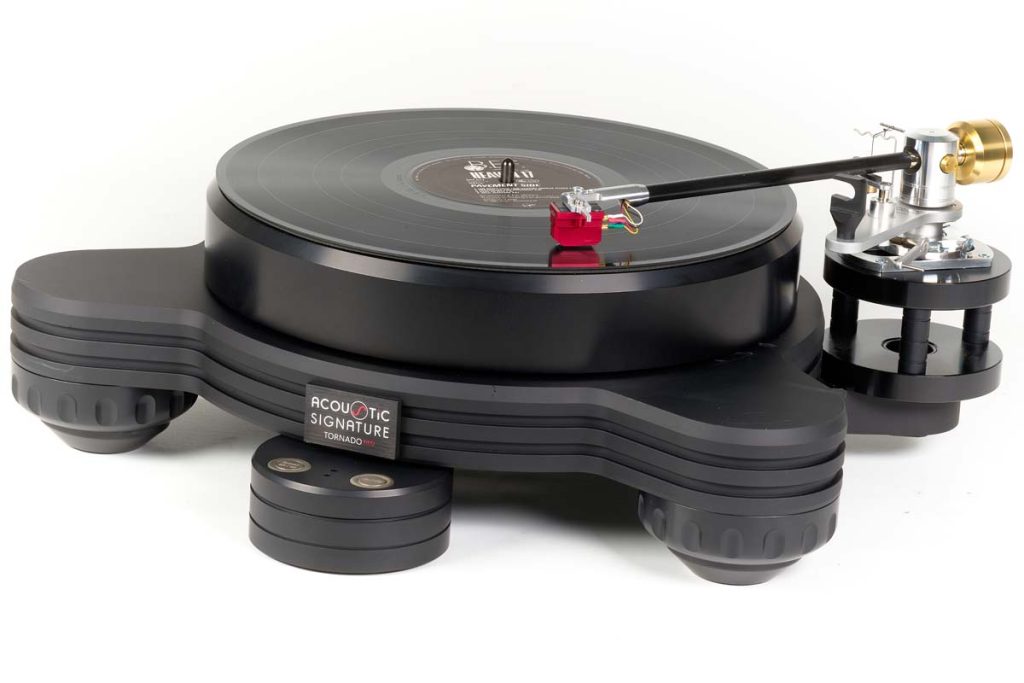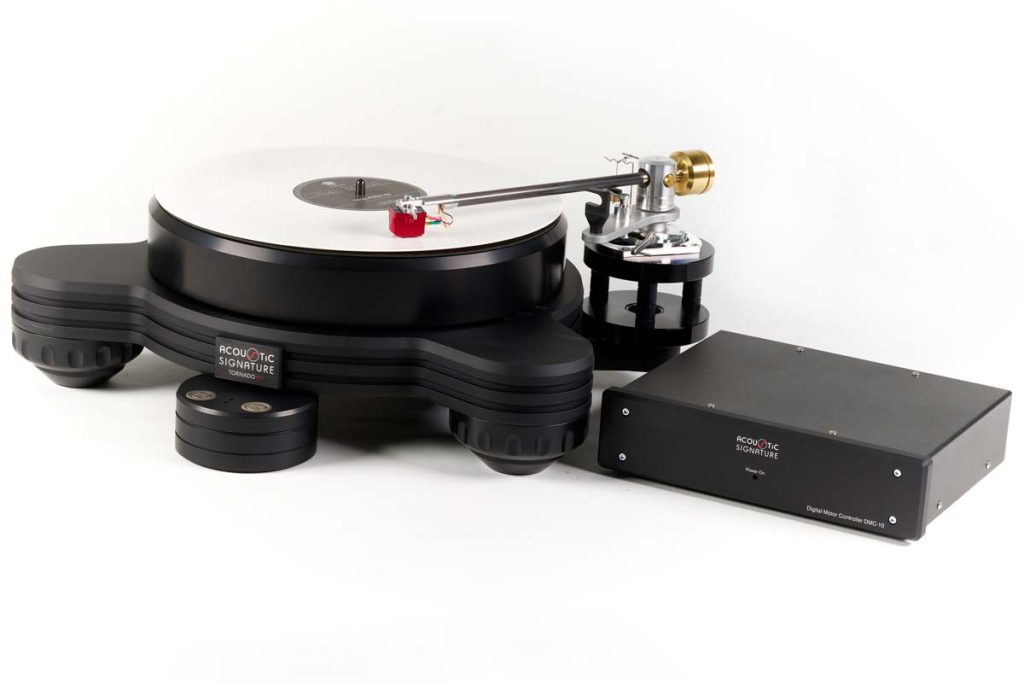Acoustic Signature has been updating its turntables, and its Tornado Neo proves that analog excellence is achieved not by casting magic spells, but by deploying sophisticated technology.
Remember how the vinyl renaissance lead to a boom in small-scale turntable manufacturers at the start of the 2000s? They predominantly focused on non-suspended turntables, and the German market alone developed over a dozen new companies, some of which were just keen to cash in and didn’t last long. And then we’ve had a turbulent last 10 years, in which the wheat has been separated from the chaff, firstly due to increased market saturation, and secondly on account of the fact that the market is awash with discerning customers. In the end, the only companies to weather the storm have been either those that were already known for producing high-quality turntables, or those boasting impressive technological know-how. While it may have benefited from the momentum of this bustling market, Acoustic Signature, based in Süßen (Baden-Württemberg), has been calmly doing its thing since 1996 and thoroughly maintained its market position.
A fleet of machinery featuring state-of-the-art technology
The company’s success is born primarily of its professional approach to craftsmanship. In addition to making its own products, they also manufacture OEM turntables for well-known national and international companies with no analog device history or experience. The company’s fleet of high-tech machinery is also utilized by German competitors for manufacturing the odd component to high standards, including components not utilized purely for analog purposes. On several occasions during our conversation, CEO Gunther Frohnhöfer stressed that the only thing that matters to him is measurable results based on mechanical and electrical engineering. He said that no voodoo is involved, and that he is not interested in promoting supposed technical innovations that may sound great to marketers but in reality don’t achieve much. For an example, Frohnhöfer mentioned inverted bearings and why he is not a fan: he said that the main source of noise from a bearing is located at the pivot point of the platter axis and the bearing thrust plate, and therefore is around 10 centimeters from the vinyl.
If the bearing were inverted, then this noise source would be within the immediate vicinity of the vinyl – not a good idea. There would also be lubrication issues, as an inverted bearing always works against gravity. As such, his company continues to use self-lubricating non-inverted bearings made from an ultra-hard material. Moreover, the in-house developed mix of materials absorbs the oil like a sponge and releases it when necessary, meaning that the bearing requires virtually zero maintenance. Newly developed sintered bushings, which can store even more oil, are now being utilized as well. The team is also particularly proud of the newly developed spindle: vacuum-hardened stainless steel is precision-ground and given a plasma coating, resulting in a 60% smaller friction coefficient. The entire product range has been updated with the various types of consistently optimized technology. The Acoustic Signature Tornado Neo, one of the company’s mid-range products, landed in my listening room. To ensure that I got the full experience, they assembled a package for me in Süßen complete with the company’s own MCX2 cartridge and the ‘small’ TA-500 NEO tonearm.
Softly, softly
The Acoustic Signature team has always thought hard on the platter. Similarly to the bearing design, the team strives for the turntable to be as low-noise as possible, so as to keep the maximum amount of disruptive energy away from the cartridge. It is not the platter weight (as the crude philosophy behind many non-suspended turntables would have you believe), but the vibration damping approach that determines the analog playback quality. First, the vibration created during the pick-up process must be dealt with. Then, the sound waves which, depending on how the system is set up, affect the pick-up process.
This is where Acoustic Signature’s Constraint Layer Damping (CLD) technology steps in. This is a mechanical engineering process whereby a material with extremely impressive damping properties is sandwiched between two materials with less impressive damping properties. The ingeniousness is comprised of the in-house developed “silencer” brass cylinders, four of which are inserted into the Tornado Neo’s 45-mm thick platter. During our conversation, CEO Frohnhöfer proudly explained that this let them reduce resonance peaks by approximately 80 decibels. The cylinder positions were determined in advance thanks to newly developed simulation software. Even here, nothing is left to chance, as Acoustic Signature utilizes its own in-house technology instead of manual trial and error.
Stress-free pickup process
So how does the company’s philosophy of constant noise reduction affect the sound quality? To find out, I dug for a not-so-run-of-the-mill vinyl. The composer Helmut Lachenmann is known for getting musicians to do things that are at odds with classic instrumental techniques, and to make sounds ranging from scratching noises and explosive bangs to barely audible whispers. Unfortunately, the rare recordings of his pieces are seldom available on high-quality vinyl, but his String Quartet No. 1, recorded with the Berner Streichquartett (Bern String Quartet) under the col legno label, is a delightful exception.
I decided that Lachenmann’s delicately spun web of sound would be the perfect fit for this test, as it would react extremely sensitively to any interference while the grooves are being traced. The tiniest disruptive noises caused by vibration and minimal playback artifacts can add interference to a track that results in the pickup process masking the actual music. But as soon as the cartridge’s stylus sank into the grooves, all I could hear were Lachenmann’s sound experiments before a pitch-black background. Brutal, belting fingerboard pizzicati startled me, since the previous harmonics had almost inaudibly faded into pianissimo to the power of four without a single drop of masking interference. I was equally struck by how the precise motor maintained the string instruments’ intonation at exactly the right pitch and prevented any sound events from blurring.
The road to heaven
The Acoustic Signature Tornado Neo is clearly aimed at discerning vinyl fans who love all things high-end, as based on how the top-level configuration of the turntable is designed for three tonearms. The relevant arm board can take both 9-inch and 12-inch tonearms. The arm base adjustment range enables a mounting distance of 222 to 310 mm. Upon request, Acoustic Signature will gladly adapt the boards in line with customers’ specific requirements. Therefore, this development is aimed at customers interested in more than just swift off-the-rack music enjoyment, who see analog music playback as an opportunity to explore various analog sound qualities over time and at leisure by utilizing their eagerness to experiment.
However, this doesn’t mean that you must have the three-arm top-level configuration from the start, as you can take this step-by-step. Yet the Acoustic Signature team does assume that prospective Tornado customers won’t be analog novices, and will already possess the odd high-end tonearm. While the target audience may be knowledgeable analog fans, no proven expertise, magic fingers or exotic tools are required to set up the turntable. Admittedly, a few manual steps are involved utilizing the enclosed perfectly designed tool, but you can still refer to this as a plug-and-play setup. If you plan to use the company’s tonearms and systems, then the set-up process and alignment procedure with the protractor, supplied as standard, are a breeze.
Fun and emotional appeal in equal measure
But can the Acoustic Signature Tornado Neo also be a fun device? Some non-suspended turntables have earned themselves the reputation of having a decent bass but tending to be a bit sedate. The release of the latest Sons Of Kemet album could not have been more perfectly timed. The pulsating tracks, fusing afro-jazz and hip-hop, follow the quartet on journeys deep into the lower octaves. Anyone who has ever wondered how a tuba and hiphop can go together should seriously give this a listen. And the Tornado ensured that it never sounded like clumsy, cumbersome oompah music. The basslines bounced through the room and got my feet tapping to the beat. There was equally an incredible sense of organization. Nothing blurred, and I could even pick out brilliant wind instrument melodies that might ordinarily have fought for attention and canceled each other out. There was never a danger of improvised parts chaotically merging.
This was also partly down to the company’s own in-house developed MCX2 cartridge system, which created order on the soundstage with ease, differentiating between the individual sound events neatly and cleanly. When the Finnish jazz bass player Ville Herrala made his solo performance on his debut album entitled Pu:, sounding as if it involved multiple musicians using a variety of plucking, stroking and bow techniques, it was to the credit of the MCX2 and the company’s smallest tonearm, the TA-500 NEO, that the musical sequences were as clear as glass. As my musical journey drew to a close, I opted for a big finish: Marilyn Horne singing Wagner’s “Wesendonck Lieder”. Horne’s mezzo-soprano voice, perfect for this lyrical style, immediately captivated me, not least because the neutral approach of cartridge and tonearm combination did not paint any artificial colors onto the vocal timbre or imprint any additional spirituality onto the voice. But together with the turntable’s stoic calm and precision, Wagner’s love hymns were left alone as they were.
Technology matters
The Acoustic Signature Tornado Neo is definitively a musical all-rounder. Every moment you spend in its company, you can’t help but notice the extensive technical experience of its developer who extracted the maximum analog enjoyment out of a turntable, but without mixing in any artificial gimmickry. And so, it’s no wonder that Acoustic Signature’s turntables come with a 15-year warranty, as the team is confident in their high-quality craftsmanship. Even though we only operated the turntable with one arm, this configuration hardly left anything to be desired. However, the Tornado could certainly put an even bigger smile on my face with even more sophisticated and certainly much more expensive cartridges and tonearms than the accompanying test pieces.
Accompanying equipment
Power amplifiers: Luxman M-03, Yamaha P2500S | Integrated amplifier: Cyrus Straight Line | Passive loudspeakers: Magnepan 1.5, KEF LS 50, Triangle Zerius | Active loudspeakers: KRK VXT 8 | Headphones: Focal Utopia, Beyerdynamic T5p | Cables: Van den Hul, Vovox, Sommer | Accessories: Oyaïde, Oehlbach
Analog turntable
Acoustic Signature Tornado Neo
Concept: non-suspended turntable with double belt drive, designed for maximum 3 tonearms | Drive: 1 AC motor, rpm-regulated double belt drive with speed fine adjustment for the subplatter, Automatic Vibration Control (AVC) technology level 1 | Turntable speeds: 33 1/3 and 45 rpm | Power supply: DMC-10 (100 – 260 V AC) | Equipment: Dura Turn Diamond bearing; 45-mm aluminum alloy chassis, height-adjustable aluminum feet; aluminum platter (anodized) with 4 silencer modules (polished brass, optional: 24-carat gold-plated or polished chrome); up to 3 adjustable arm boards for 9-inch to 12-inch tonearms | Finish: black (anodized), silver (anodized) or two-tone | Dimensions (W/H/D): 45/16/46 cm | Weight: 26.5 kg | Warranty period: 15 years (after registration) | Price: about €6,000
Tonearm
Acoustic Signature TA-500 NEO
Concept: 9-inch tonearm with dual-layer carbon tonearm tube | Equipment: gimbal precision ball bearing, stainless steel tonearm axis, Mogami internal copper wiring, brass counterweight; adjustable VTA | Included as standard: AudioQuest 5-pin copper phono cable (RCA) | Warranty period: 5 years (after registration) | Price: about €1,350
Cartridge
Acoustic Signature MCX2
Concept: moving coil (MC) system | Output voltage: 0.55 mV (1 kHz, 5 cm/s) | Channel balance: < 1.5 dB (1 kHz) | Channel separation: > 21 dB (1 kHz) | Stylus compliance: 15 µm/mN | Stylus cut: nude elliptical | Tracking force: 2.1 to 2.5 g, recommended 2.3 g (23 mN) | Frequency response: 20 Hz to 20 kHz (± 2.5 dB) | Weight: 12.2 g | Warranty period: 2 years | Price: about €800
AS-Distribution GmbH
Hillenbrandstraße 10
73079 Süßen, Germany
Phone +49 7162 9474450
info@as-distribution.de

